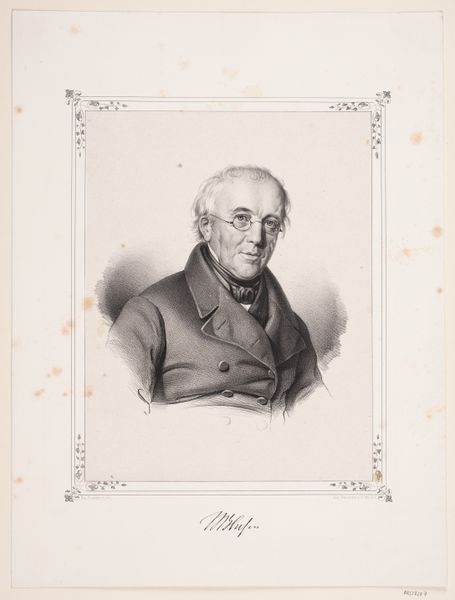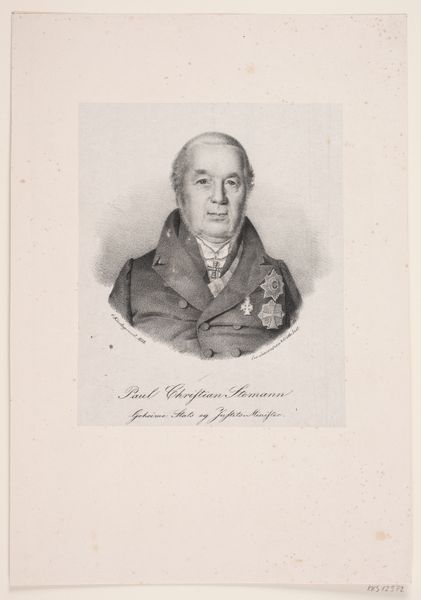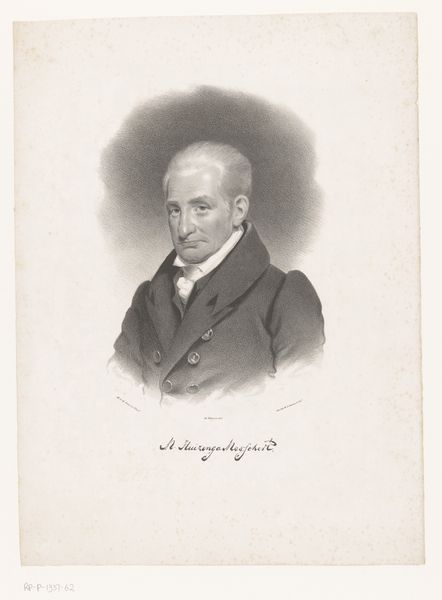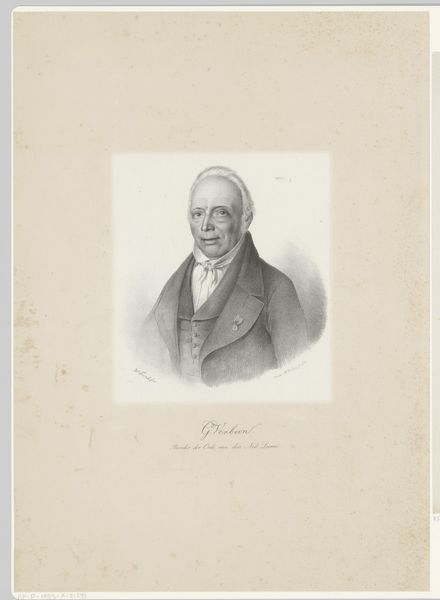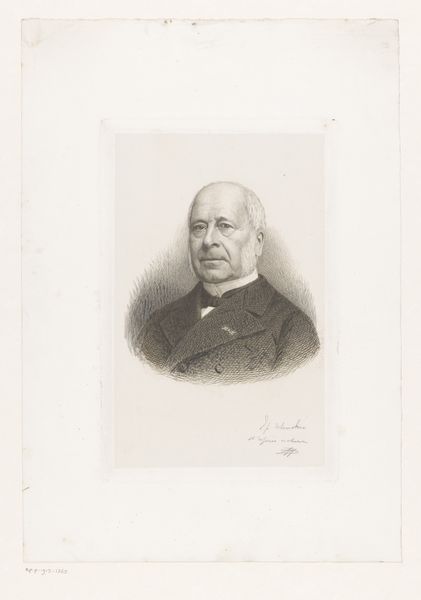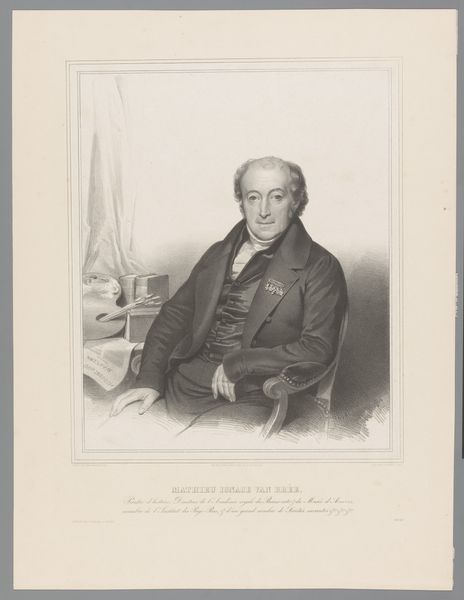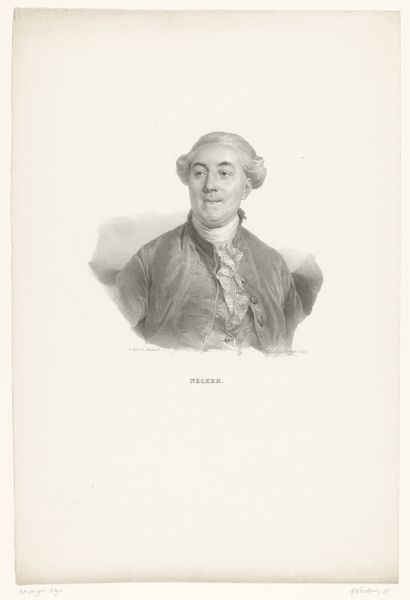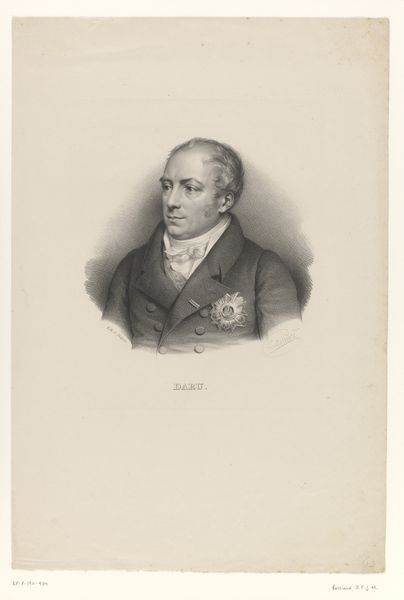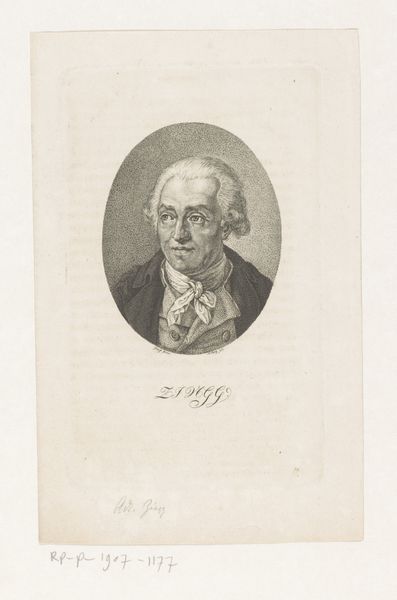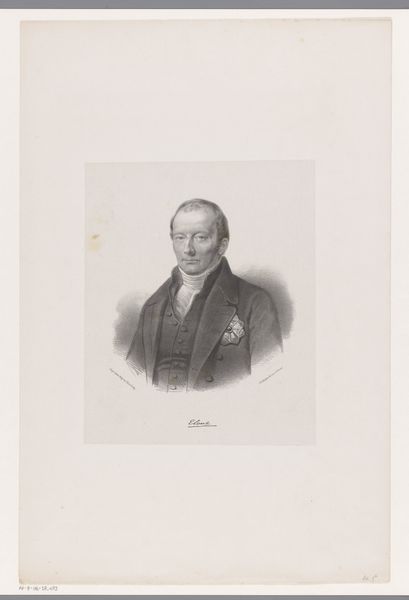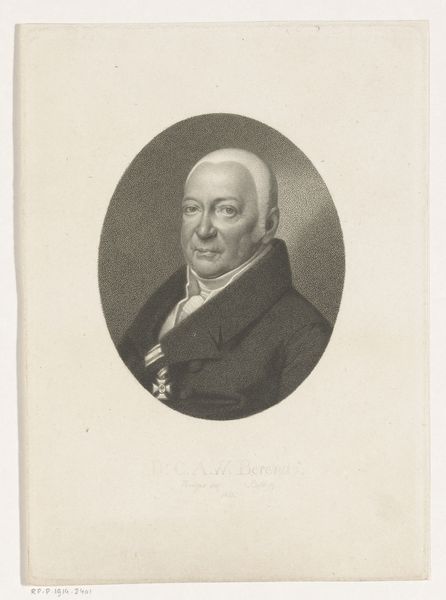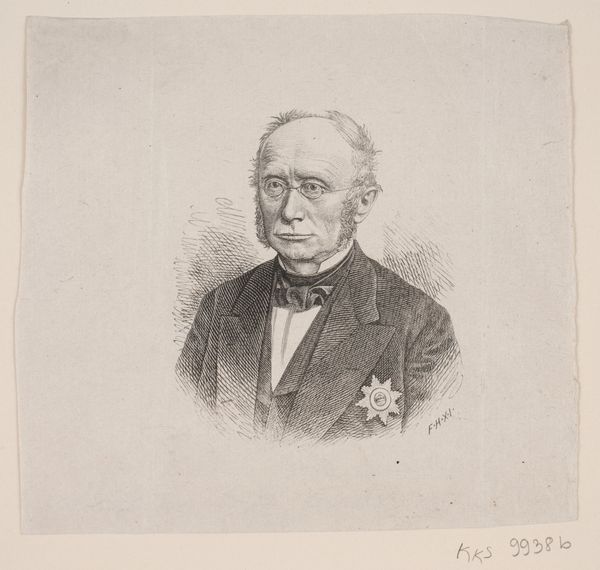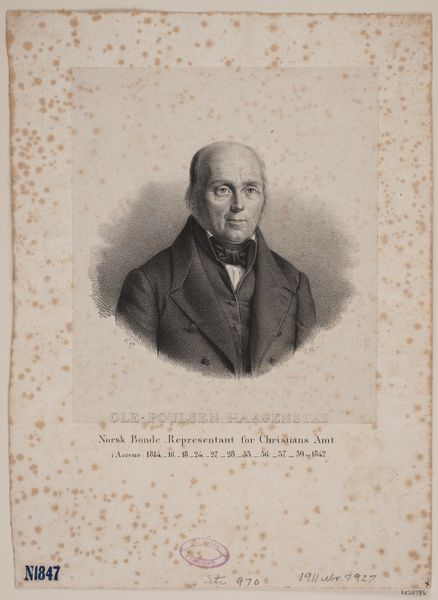
lithograph, print
#
portrait
#
lithograph
# print
#
romanticism
#
portrait drawing
Dimensions: 369 mm (height) x 275 mm (width) (bladmaal)
Curator: This is a lithograph dating from the 1840s. It depicts H. C. Ørsted, rendered by Emil Ditlev Bærentzen and held in the collection of the SMK, the National Gallery of Denmark. Editor: My first impression is of thoughtful reserve. The tightly framed composition focuses my attention entirely on his countenance, with its serious expression and softly rendered features. Curator: Yes, observe how Bærentzen has masterfully employed light and shadow to shape Ørsted's face. The gradations around the eyes and mouth give a sense of depth, conveying intellect and gravity. There's also the considered positioning within the decorative border, further formalising the presentation. Editor: Medals adorn his lapel and neck, symbols of his esteemed contributions. He’s almost iconic—not just a man, but an embodiment of scientific achievement and Danish pride. The light seems strategically placed to reflect off the medals too, highlighting the symbolism. Curator: Precisely. Moreover, consider lithography as a medium. Its capacity for detailed reproduction meant images like these were widely distributed. Thus, images could proliferate Romantic ideals while communicating Ørsted's legacy. Editor: These visual signifiers are not merely decorative. They communicate deeply ingrained social and cultural values surrounding scholarship, honor, and nationhood. It speaks to Denmark's desire for recognition on a world stage, leveraging Örsted's fame as validation. Curator: Indeed, while seemingly straightforward, this portrait resonates as a study in contrasts: intimacy conveyed through skilled rendering and public image conveyed through the symbolic markers of status. Editor: This blend of individual personality and public persona reminds us of portraiture’s enduring power to shape how we remember individuals and their place in history. Curator: And this examination invites us to reconsider how formal structure, artistic method, and enduring images continue to mold our interpretations of cultural memory.
Comments
No comments
Be the first to comment and join the conversation on the ultimate creative platform.
